First look at WISSARD Equipment
We took a little field trip out onto the ice today to visit WISSARD – or at least the pieces and parts that will become the WISSARD Drill and equipment for gathering data from the drill hole. Remember that WISSARD is drilling into the glacial ice to look at the physical, chemical, and biological characteristics of what’s in the subglacial stream and lake environment. If you are not sure what that means, here’s a slightly different way to explain it.
Physical characteristics are the things you can see or measure directly. How much you weigh is a physical measurement. The WISSARD science team will look at how thick the ice is, how the water flows between the ice, and the rocks of the continent that are below the ice. Imagine that beneath the ice that covers the Antarctic there is a rocky surface with many small rivers and lakes in it. The project is trying to find out how much water is in those streams, how it flows, and how it is changed by the ice above it. To do that, the scientists need to be able to measure the water depth and other information about it like how fast it flows and how many rock particles it carries along with it. They also want to sample the rocks that are directly underneath the ice to see how thick the sediments are and what types of rocks are down there.
The chemical characteristics are those things that can only be measured in a laboratory and help to tell us where the water has been and what kinds of minerals it has picked up from the rocks it flows over. Some examples might be how much salt or other chemical compounds are in the water. It could also look at how much oxygen is dissolved in the water.
Biological characteristics will help to tell if there are microscopic life forms like bacteria in the water. This will help the science team understand how life changes over time and whether these subglacial environments have been separated from other life forms for very long periods of time – possibly millions of year.
It’s a lot of information to collect, and it takes some very special equipment to drill through the ice and do the sample collection.
What we saw sitting on the ice was six 40-foot long shipping containers (like a semi-truck trailer) and a vast array of crates and other parts scattered over the ice. It may sound a little disorganized, but it’s a great storage method. It’s so dry in Antarctica that metal doesn’t rust quickly and wood doesn’t decompose. The only real worry is if something gets covered with blowing snow. It can also be very windy, so light items need to be kept from blowing away.
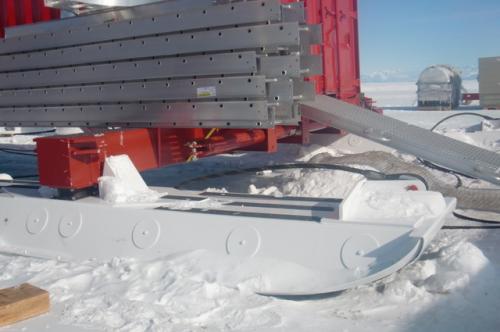
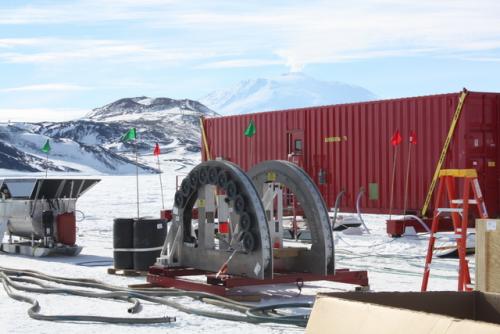
The drill crew was busy putting the parts together that will be the hot water drill. Rather than drilling by cutting the ice into smaller pieces and removing them from the hole, they will drill with hot water that will melt the ice away, then they will pump the water out of the hole, filter and clean it, and reuse it to keep drilling down into the ice. The drawing below shows the major parts of the system.
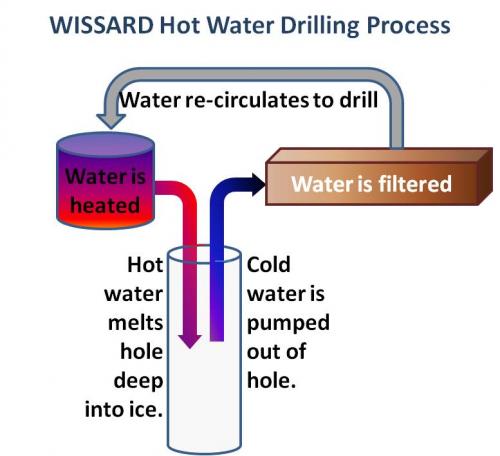
Right now you can’t really tell what the drill will look like because all of the parts aren’t there or put together yet. Just keep following the project and you will see how the equipment progresses.
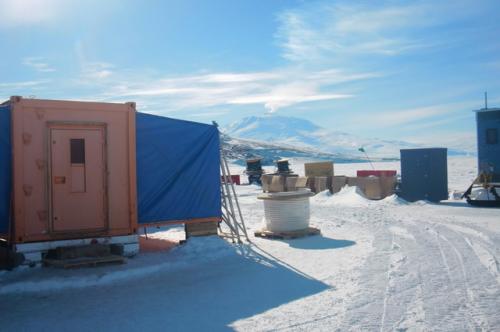
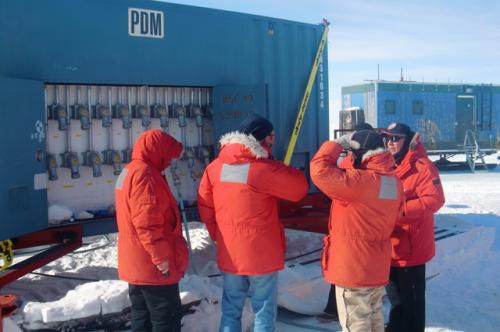


Comments